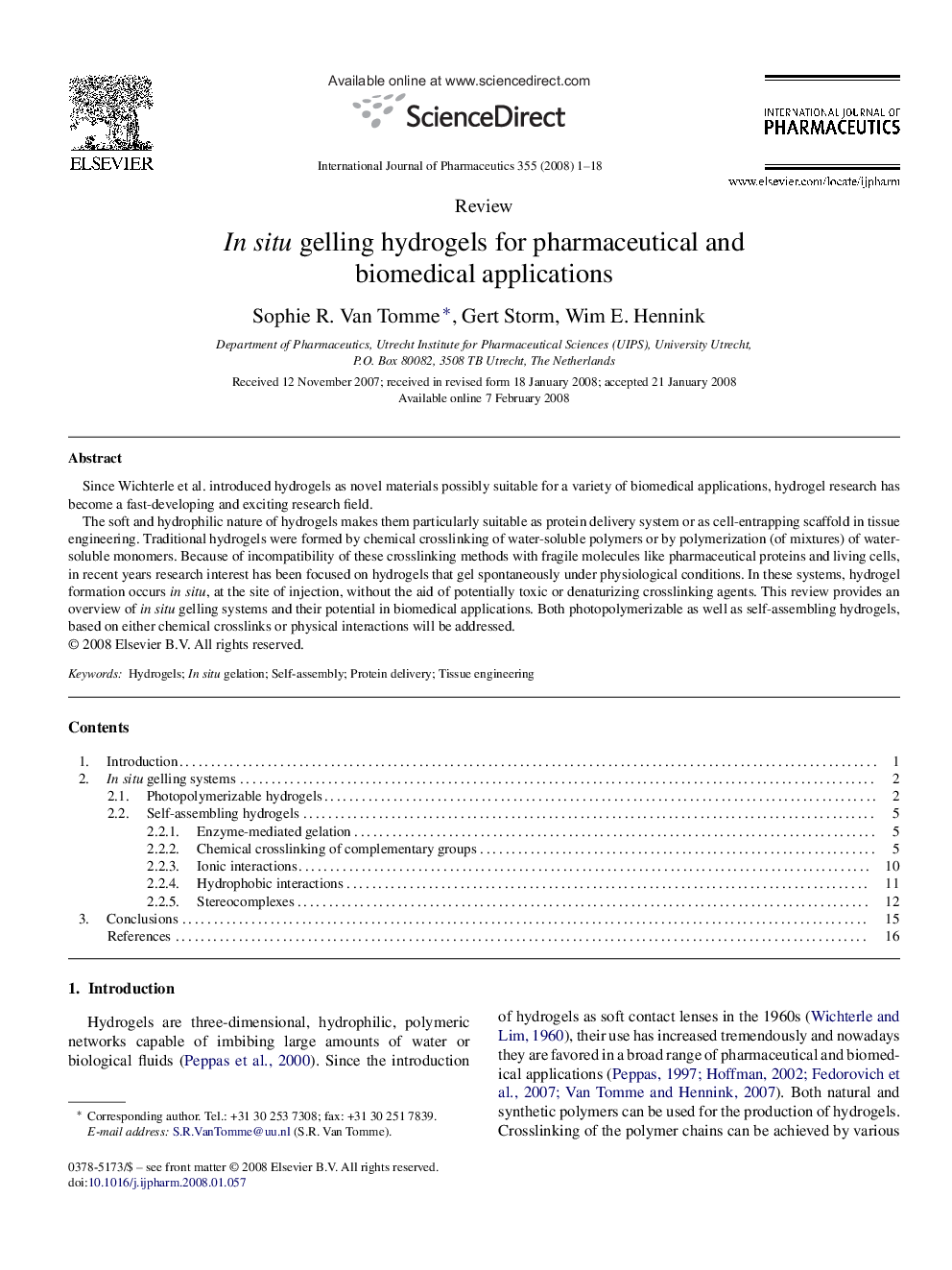| Article ID | Journal | Published Year | Pages | File Type |
|---|---|---|---|---|
| 2505563 | International Journal of Pharmaceutics | 2008 | 18 Pages |
Since Wichterle et al. introduced hydrogels as novel materials possibly suitable for a variety of biomedical applications, hydrogel research has become a fast-developing and exciting research field.The soft and hydrophilic nature of hydrogels makes them particularly suitable as protein delivery system or as cell-entrapping scaffold in tissue engineering. Traditional hydrogels were formed by chemical crosslinking of water-soluble polymers or by polymerization (of mixtures) of water-soluble monomers. Because of incompatibility of these crosslinking methods with fragile molecules like pharmaceutical proteins and living cells, in recent years research interest has been focused on hydrogels that gel spontaneously under physiological conditions. In these systems, hydrogel formation occurs in situ, at the site of injection, without the aid of potentially toxic or denaturizing crosslinking agents. This review provides an overview of in situ gelling systems and their potential in biomedical applications. Both photopolymerizable as well as self-assembling hydrogels, based on either chemical crosslinks or physical interactions will be addressed.
